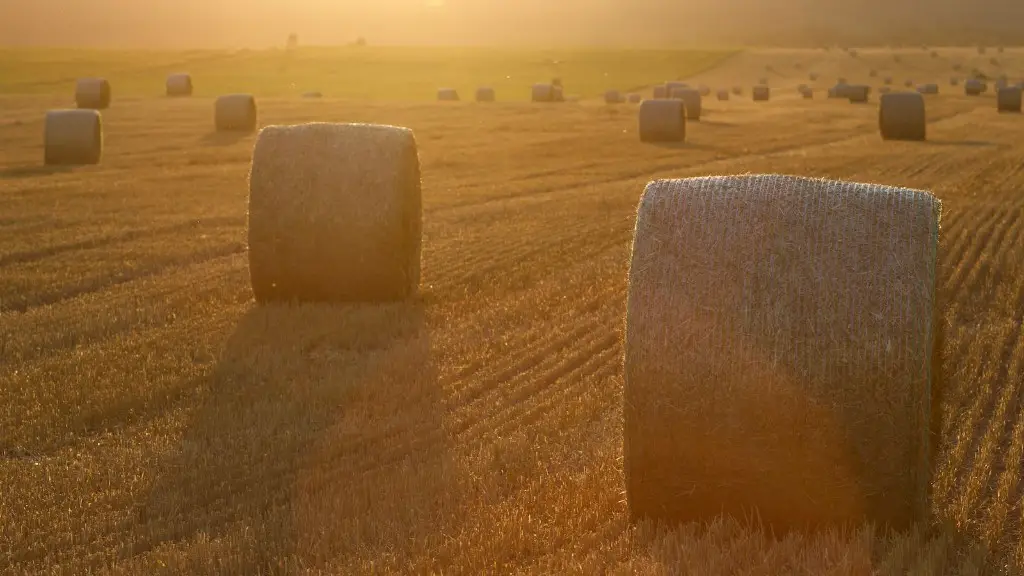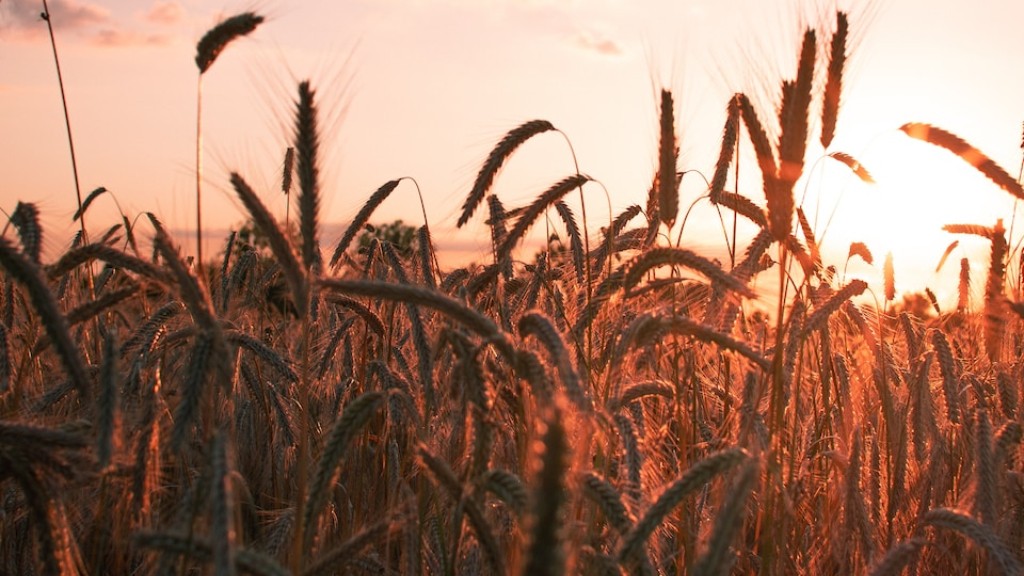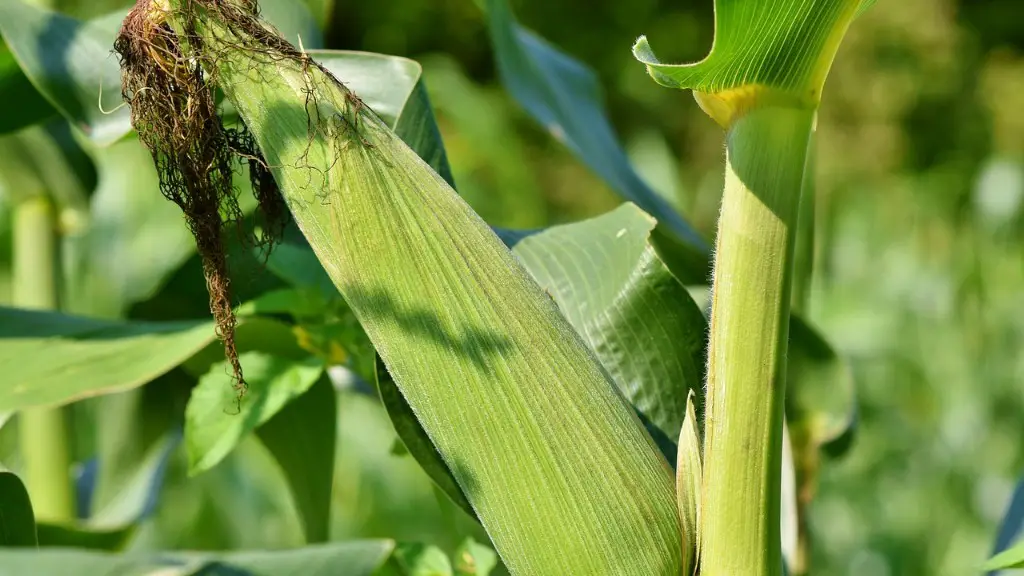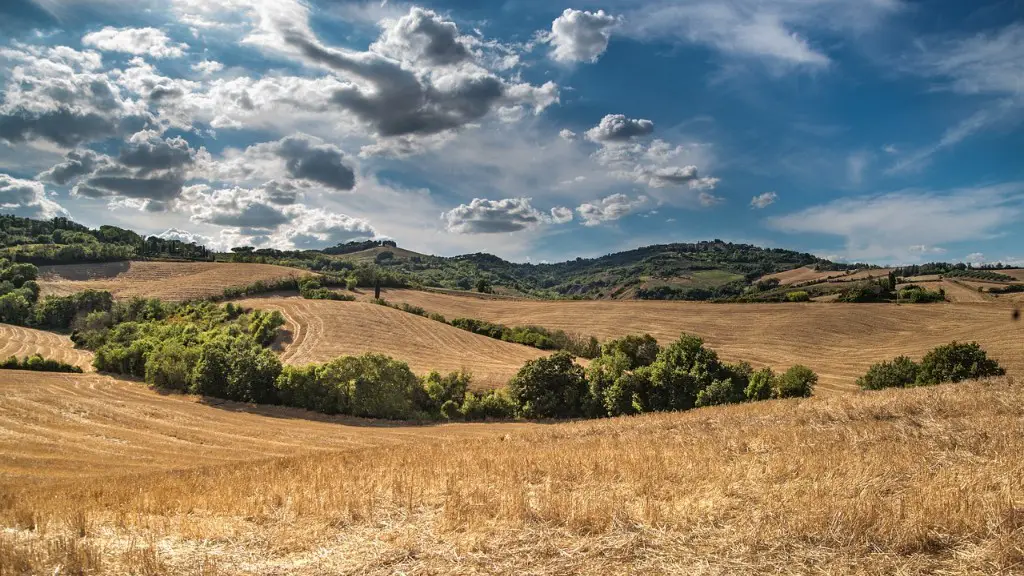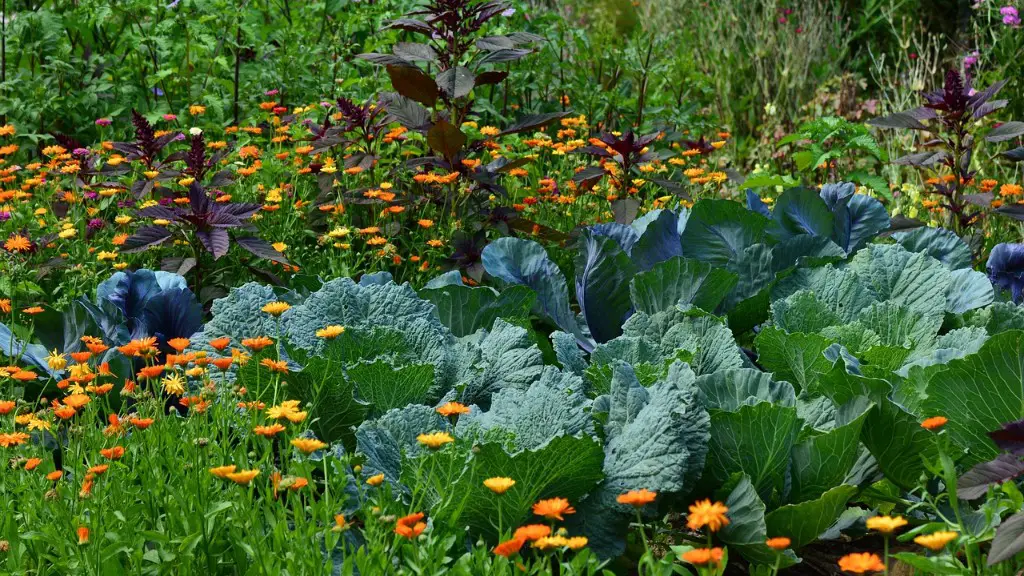Agriculture is a major part of most ecosystems. It affects both the structure and function of ecosystems, usually in the form of increasing inputs of energy and reducing the biodiversity in the area. Agriculture can have both positive and negative impacts on ecosystems, depending on the type and scale of the farming activities. In this article, we will discuss how agriculture affects ecosystems and explore how these impacts can be managed.
Due to farming and livestock practices, agricultural activities release nitrogen and phosphorus into the environment, often leading to water pollution, soil degradation and biodiversity loss. Agricultural runoff can increase soil salinization, significantly decreasing the available water for ecosystems. These inputs of nutrients can also disrupt the nutrient balances in fragile systems, resulting in eutrophication and algal blooms. Agricultural activities can also lead to soil erosion, impacting water availability and overall habitat structure.
Agriculture can also play a role in climate change. Intensive management of agricultural land results in changes in surface reflectivity, increasing warming and releasing carbon dioxide into the atmosphere. Additionally, agricultural activities can lead to changes in land use, resulting in conversion of forests and grasslands for crop production and for grazing animals. This can lead to an increase in CO2 in the atmosphere and a decrease in the overall carbon sink capacity, further worsening global climate change.
Agriculture also has the potential to provide global food security. It can provide food to people facing food insecurity and, if managed sustainably, provide a viable source of nutrition for future generations. Sustainable agriculture, such as agroforestry, regenerative agriculture and the use of cover crops, can help to improve soil quality, reduce runoff, preserve biodiversity and provide a secure carbon sink.
Agriculture can also support rural and regional economies, as well as provide employment and social capital. It has the potential to reduce poverty and hunger, while also providing incentives for conservation and education. Agricultural workers can play a role in the stewardship of natural resource and help manage the impacts that agriculture has on ecosystems.
While agriculture can bring many benefits to ecosystems, it can also have negative impacts if not managed properly. Farmers and policy makers must take into consider the impacts of their practices and find ways to manage them sustainably. By implementing good management practices, such as using cover crops and crop rotation, farmers can ensure that their activities are not detrimental to their local ecosystems.
Land Degradation
Agriculture is widely acknowledged to be one of the major contributors to land degradation worldwide. The use of fertilisers and agrochemicals and the over-cultivation of soil can cause soil erosion, desertification, and contamination. Land degradation can result in biodiversity losses, water scarcity and degraded productivity, as well as indirect effects on climate change. Poor land management can lead to land becoming unproductive, resulting in economic losses, poverty and migration.
Land degradation can be managed by using agronomic practices that reduce soil erosion and water pollution. Additionally, the adoption of sustainable land management practices can improve soil quality and restore soil fertility. New technologies such as precision agriculture, GIS mapping and satellite imagery can be utilised to detect problems early and allow for targeted interventions.
Using agroecological practices can also help to reduce land degradation and improve soil fertility. Agroecology is a farming system which combines traditional knowledge with modern science to sustainably manage natural resources. Practices such as the use of compost, crop rotation and intercropping can help improve soil fertility and sequester carbon, while also providing additional benefits such as beneficial habitat for wildlife.
The adoption of conservation agriculture can also help reduce land degradation. Conservation agriculture encourages farmers to maintain a permanent soil cover, use crop rotation and reduce or eliminate the use of inorganic fertilisers. This reduces erosion, improves soil fertility and enhances the soil’s ability to store water, all of which can have a positive impact on land degradation.
Building resilience to climate change is another key factor in reducing land degradation. Climate change can cause increased droughts and floods, leading to soil erosion and fertility decline. Adaptive practices such as drip irrigation, water harvesting and climate-smart farming can help improve soil quality and reduce the impacts of climate change.
Biodiversity Loss
Agriculture is one of the leading causes of biodiversity loss globally. Intensive farming practices can lead to a loss of habitats and altered species composition, while monoculture can reduce the available food and shelter for wildlife. Pesticide use, urbanisation and habitat conversion can also contribute to a decline in biodiversity.
Biodiversity loss in agricultural ecosystems can also have a negative impact on the provision of services to humans and other ecosystems. Loss of biodiversity can affect the natural balance of pests and diseases, leading to declines in crop yields. In addition, it can reduce the availability of water and nutrient cycling, leading to a decline in soil fertility. Conserving biodiversity in agricultural systems can help to maintain resilience and productivity, as well as increase adaptive capacity to climate change.
Biodiversity conservation in agricultural systems should be a priority for farmers and policy makers. The introduction of land-sharing and land-sparing practices can help to reduce the negative impacts of agriculture on biodiversity. Land-sparing involves the intensive management of a smaller area, while land-sharing involves a larger but more diverse area. These practices can help to reduce the loss of habitat, while also providing benefits such as increased pollination, pest control and soil fertility.
Maintaining and restoring buffer zones, hedgerows, wetlands and compost heaps can also benefit biodiversity. By creating habitats for wildlife, these practices can help to support food webs, pollination, seed dispersal and other ecosystem services. Additionally, the maintenance of natural habitats can help to mitigate against climate change by sequestering carbon, improving water efficiency and reducing soil erosion.
In addition, farmers can reduce their reliance on agrochemicals by adopting Integrated Pest Management (IPM) practices. IPM involves the use of natural enemies to reduce pests, as well as the promotion of beneficial habitat, use of resistant species and monitoring of pests using non-lethal methods.
Soil Fertility Loss
Intensive agricultural management can lead to a decrease in soil fertility, as well as an increase in soil erosion and contamination. Soil fertility losses can be caused by nutrient mining, water losses, soil compaction and alterations in soil chemistry. This can result in decreased crop yields, loss of habitats for soil organisms and increased soil erosion.
Good soil management can help to reduce soil fertility losses, improve productivity and reduce the negative impacts of agriculture on the environment. Practices such as adding organic matter, crop rotation, composting, mulching and increased cover cropping can help to increase soil fertility and conserve soil resources. In addition, the use of cover crops and green manures can improve soil structure and increase water retention, reducing the effects of soil erosion.
Crop rotation is a practice that involves growing different crop species in rotation on the same piece of land over time. This practice can prevent the depletion of soil resources and reduce the incidence of pests and diseases. Additionally, incorporating nitrogen-fixing crops into the rotation can help to replenish nitrogen levels in the soil.
The use of compost and green manure can also help to improve soil fertility. Using compost helps to increase the availability of key plant nutrients, such as nitrogen and phosphorus. In addition, green manure materials can help to improve soil organic matter and add the necessary organic matter for soil fertility.
The adoption of precision agriculture can also help to reduce soil fertility losses. Precision agriculture utilises GPS location and sensors to measure soil characteristics and crop growth, allowing farmers to optimise their management practices for specific areas.
Water Scarcity
Agriculture is a major driver of water scarcity, as it uses a large amount of freshwater for irrigation, processing and cooling. To agricultural practices can also lead to water pollution, depletion of groundwater and increased occurrence of droughts.
Good water management practices can help to reduce water scarcity and conserve water resources. Water harvesting and drip irrigation are two practices that can help reduce water losses and improve efficiency. Additionally, the use of crop rotation and conservation agriculture can reduce water stress and improve soil water holding capacity.
The adoption of water-efficient crop varieties can also help to reduce water use. These varieties are designed to use less water and can resist drought more efficiently. In addition, the use of mulch, cover crops and water-harvesting structures can help capture valuable water resources.
The use of rainwater for irrigation can help to reduce the strain on freshwater resources. Rainwater can be harvested from roofs, paving and other surfaces, and used for irrigation or other agricultural activities. The water can also be stored in tanks and dams for later use. By harvesting rainwater and using it for irrigation, farmers can reduce their dependence on freshwater resources.
The adoption of agroforestry systems is another way to reduce water scarcity, as trees can help to capture, store and recycle water. Agroforestry combines trees, crops and livestock into a single system, providing a range of benefits such as improving soil fertility and reducing runoff, while also providing additional products such as firewood and fodder.
Climate Change
Agriculture has a significant role to play in mitigating and adapting to climate change. Reducing greenhouse gas emissions, maintaining biodiversity and improving soil health can all help to reduce the negative impacts of climate change. In addition, the development of climate resilient crop varieties and the use of agroforestry systems can help farmers to become more resilient to climate change.
Reducing emissions from agricultural activities is fundamental to reducing climate change. Farmers can reduce their emissions by adopting sustainable agricultural practices such as crop rotation, cover cropping, no-till farming and irrigating more efficiently. These practices can help to reduce the need for energy-intensive activities, reducing agricultural emissions.
The maintenance and restoration of natural habitats for wildlife can also help to reduce emissions and improve soil health. These habitats can help to improve carbon storage and support biodiversity, which can improve the overall health of the land and protect it from the impacts of climate change.
In addition, agroforestry systems can help to reduce emissions and create greater resilience to climate change. These systems utilise trees, crops and livestock to create a sustainable system which can store carbon, improve soil fertility and reduce water losses. Agroforestry can also provide additional products and services, such as firewood, mulch and fodder.
Climate-smart agriculture can also help to reduce emissions and increase resilience to climate change. Climate-smart agriculture incorporates climate information into agricultural management, allowing farmers to make informed decisions about their farming practices. This can help to reduce emissions, improve crop yields and reduce water stress, while also helping farmers to adapt to changing climate conditions.
